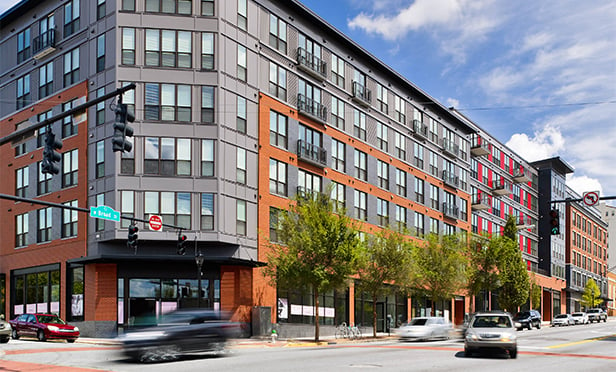 Kate Langan, chair of CoreNet Global and group general manager property at ANZ Banking Group in Melbourne, Australia.
Kate Langan, chair of CoreNet Global and group general manager property at ANZ Banking Group in Melbourne, Australia.
Part 2 of 2
PHILADELPHIA—This week, CoreNet Global hosts its Americas Global Summit in Philadelphia. The event's theme is “The Bigger Picture: Geopolitics, Economics and the Environment.” One topic that will be discussed in detail is the future of corporate real estate. CoreNet Global recently released an in-depth analysis on the future of Corporate Real Estate and in part one of this two-part Q&A, we chatted with Kate Langan, chair of CoreNet Global and group general manager property at ANZ Banking Group in Melbourne, Australia, about how business will change the way it manages its real estate and what, in turn, will be affected by this change? In the following Q&A, we learn more about her insights on the main findings of the report as it relates to technology.
GlobeSt.com: Regarding technology specifically, how are things changing and what are the implications of those changes?
Langan: Perhaps one of the largest and most overlooked impacts of technology is the need for increased cybersecurity.
Real estate increasingly incorporates technology in the way it operates and is managed. As such, cybersecurity is a major concern, and is becoming a very real part of the CRE professional's domain. Cybersecurity risks are posed on multiple levels, not only in the operation of facilities in terms of employees' physical well-being and safety but also in the way that building technology systems can enable access to larger business systems.
A number of organizations are still 'behind the curve' in appreciating the interconnectedness of some of today's technologies and need to understand and introduce necessary security measures to better segregate and protect critical technology systems.
According to a 2015 EY Global Information Security Survey1, 88 percent of nearly 1,800 organizations surveyed across 67 countries said they do not believe their information security structure fully meets their organization's needs. The survey also found that more than one-third (36 percent) of global organizations still lack confidence in their ability to detect sophisticated cyber-attacks.
The Internet of Things (IoT), whilst wildly exciting, does mean that as organizations begin harnessing the power of interconnected networks, they need also to introduce new levels of security to mitigate the increasing risks related to protecting devices, data and ultimately end-users. For example, every new device introduced in an IoT system adds a new entry point or opportunity for malicious attack. Likewise, there is also more exposure for “identity spoofing” or the ability for individuals to gain unauthorized access to a wide range of networks.
CRE professionals also, of course, need to be responsive to the impact of increased technology and devices-of-choice policies in the workplace. As employees become more technology self-sufficient with the proliferation of hand-held devices, the shape of the workplace needs to change to respond. Do I still need a desk if I work on a hand-held devise? “Multi-modal” workplace networks will provide increasing flexibility in the way we work and how a workplace functions.
GlobeSt.com: How is technology and changing workplace practices affecting the development of cities, and how is that in turn determining how corporations will operate in the future?
Langan: For half a century, cost has been a primary driver in corporate real estate decisions. We have seen companies move from city centers to suburban campuses in order to expand whilst controlling costs, to provide more socially responsible environments and be closer to workers' homes.
In the past decade, we have seen a shift in this approach with some companies choosing to relocate to urban hubs to be closer to a changing workforce. As technological developments serve to assist local governments to better manage city infrastructure, we see that younger workers, as well as 'empty nesters', are attracted to the rich diversity and readily available cultural amenities of city life.
According to JLL's Peter Miscovich, “digital talent demand will drive corporate location strategies. If an employee is only going to visit the corporate office within brief intervals each week, then we really must provide the highest quality of enriched employee workplace experience.” He adds that some businesses are already working to create more attractive and flexible work spaces that can provide the rich and inspiring collaborative environment workers want.
1 “Creating trust in the digital world: EY's Global Information Security Survey 2015.” EY. (http://www.ey.com/Publication/vwLUAssets/ey-global-information-
security-survey-2015/$FILE/ey-global-information-security-survey-2015.pdf)
2 “Global Landscape of Climate Finance 2015,” The Climate Policy Initiative, (http://climatepolicyinitiative.org/wp content/uploads/2015/11/Global-
Landscape-of-Climate-Finance-2015.pdf)
Want to continue reading?
Become a Free ALM Digital Reader.
Once you are an ALM Digital Member, you’ll receive:
- Breaking commercial real estate news and analysis, on-site and via our newsletters and custom alerts
- Educational webcasts, white papers, and ebooks from industry thought leaders
- Critical coverage of the property casualty insurance and financial advisory markets on our other ALM sites, PropertyCasualty360 and ThinkAdvisor
Already have an account? Sign In Now
*May exclude premium content© 2024 ALM Global, LLC, All Rights Reserved. Request academic re-use from www.copyright.com. All other uses, submit a request to [email protected]. For more information visit Asset & Logo Licensing.








